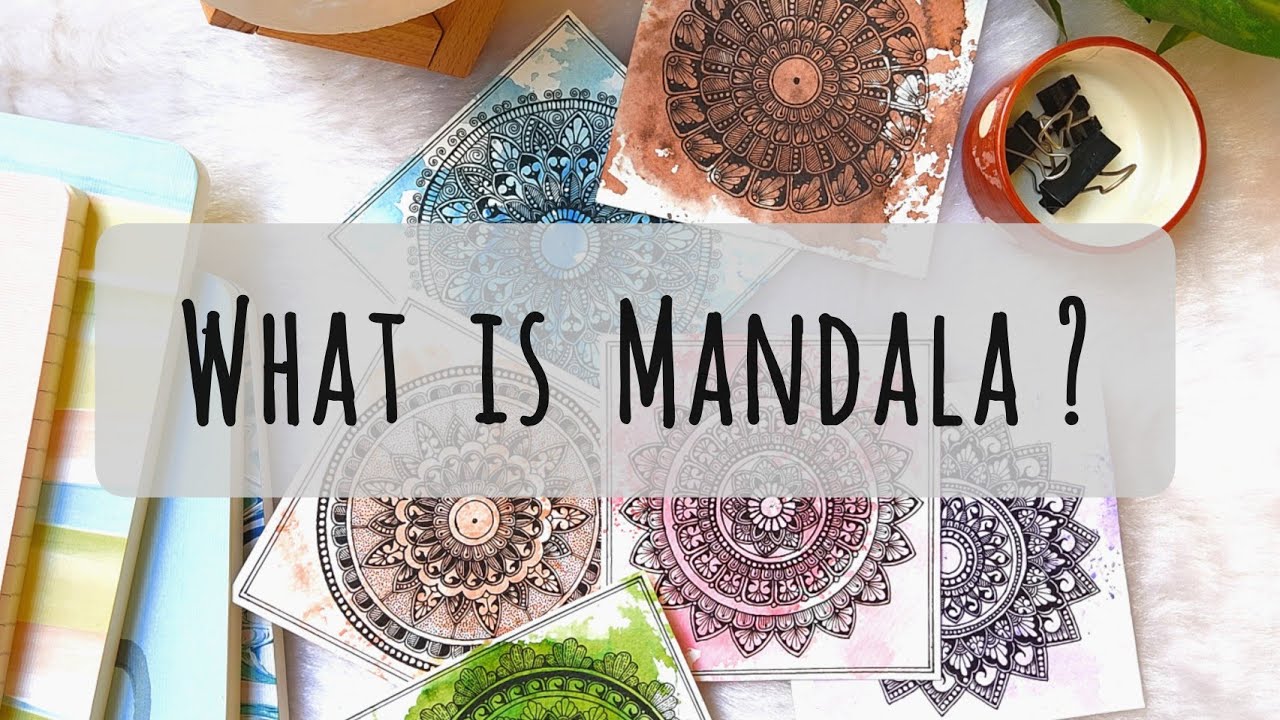The word mandala comes from the Sanskrit word for “circle” or “centre,” from which we get the English word. It’s a geometric shape revered for its symbolic meaning in Hindu and Buddhist art. Spiritual and cultural practises from both civilizations, coupled with meditation, were seen as effective means of centering one’s thoughts on one’s inner self. Sacred and concentrating all the powers of the world, a mandala is a depiction of the cosmos with deep spiritual significance.
Mandalas may be represented graphically as a series of concentric circles with geometric shapes like triangles and squares interspersed at regular intervals. Each of these shapes is said to symbolise some facet of the world.
Many cultures view the point in the centre of a mandala as symbolic of a cosmic process of reintegration and disintegration, respectively entering and leaving the centre of strength or the core. Humans interpret this cosmic process, which they equate with the life and death of a soul and the spirits of gods, as the accumulation of a person’s virtues and vices. Currently, mandalas are used in spiritual practises in China, Tibet, and Japan.
It is reported that in ancient times, individuals would enter a trance state while meditating around a mandala in order to cleanse themselves of their sins. People also started using mandala art bookmarks to get a positive energy everytime.
It represents the concentration of cosmic energy, which brings happiness and ends all pain.
A Brief History
The birthplace of Buddhism’s founder, Siddhartha Gautama, is generally agreed to be Nepal about 560 B.C. Gautama left his kingdom to meditate and practise compassion after realising the extent of human suffering. He began travelling across India to spread his teachings, where he attracted devoted followers and eventually established the first Buddhist monastic community, known as a sangha.
These monks took use of the Silk Road, the ancient trade route that linked East and West, to disseminate Buddhism to new lands. They carried the practise of making mandalas with them, and it quickly caught on across Asia. Originally used in Buddhist ceremonies, mandalas have now made their way into those of Hinduism and other faiths.
The healing power of mandalas
Because of its profound restorative effects, mandala art has been gaining appeal in the West in recent years. The ancient art style has fascinated people for the following reasons for thousands of years:
Meditation on the Mandala
Mandalas are a contemplative art form. Energy and vibrations of many forms and colours are thought to permeate and distort our being. By re-establishing a state of internal equilibrium, mandala meditation may do wonders for our mental and emotional well-being.
When doing mandala meditation, one often starts by focusing on the dot at the mandala’s core. From here, you may ‘enter’ the Mandala and start your exploration of the symbols. Keep your attention steady while you take in the mandala’s intricate patterns and brilliant hues. As you explore the Mandala more thoroughly, you may feel at peace and receive intuitive messages if you maintain a state of relaxation and deep breathing throughout.
Strong bonding
In the pursuit of self-awareness, mandalas facilitate a deeper connection with one’s innermost self. Mandala art bookmarks, tassel bookmarks are a great way to think about yourself and your place in the world.
Calming Effects
Everyone nowadays is juggling many responsibilities at once, in an effort to strike a healthy work-life balance. This produces a lot of stress, which, if not dealt with, can lead to psychological problems. Mandalas are a great way to relax and unwind. The intricate patterns divert attention away from the problem at hand, offering the brain some much-needed downtime.
The Artists
Both historical and contemporary artists are non-professionals who follow a religious faith and come from artistic ancestries. Among the artists are some monks. All artists are also very spiritual people; in Tibetan Buddhism, for example, there is a lengthy initiation process for painters.
Conclusion
Mandalas are utilised in meditation and other forms of spiritual practise. In ancient Tibetan tradition, the Buddha’s enlightened condition is represented by the mandala. A tiny metal tube containing grains and colours is used to make the patterns on a mandala. The tubes add a unique visual texture to the mandala. The mandala is destroyed and rebuilt at predetermined intervals. This is done because, according to Buddhist doctrine, nothing in the cosmos is set in stone.
Mandalas have been put to many uses in recent years. You’ll find them in yoga classes and other quiet gatherings. Mandala-patterned tops are a popular choice for casual wear. They serve as ambience in recording studios and performance halls. These days, mandala art bookmarks are typically created in the shape of dream catchers and used as a bookmark. It can be given as a present and delivered as a sign of affection.

